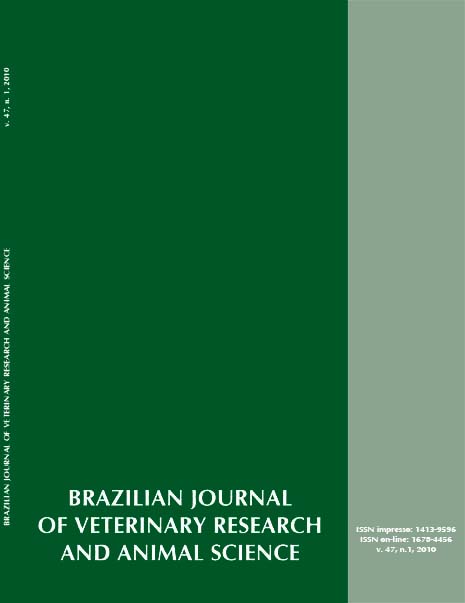Employment of electrochemotherapy in canine neoplasms of epithelial or mesenchymal origin located in the skin or mucosal membranes
DOI:
https://doi.org/10.11606/issn.1678-4456.bjvras.2010.26849Keywords:
Dog, Neoplasia, Electroporation, ElectrochemotherapyAbstract
Electrochemotherapy is characterized as a protocol which combines the use of antineoplastic agents with localized application of electric pulses to improve the intracellular concentration of these agents, increasing, thus, its cytotoxic action. Bleomycin, an antibiotic agent with antineoplastic properties, is a hydrophilic molecule, having a restricted transport through the cellular membrane. However, when it is administered intralesionally or intravenously and associated to electroporation, its cytotoxicity is maximized. In this study 34 dogs were utilized and they were affected by a single lesion of epithelial or mesenchymal origin, located in the skin or mucosal membranes. The electrochemotherapy protocol was standardized using intralesional bleomycin sulfate at a dose of 1 U/cm³ of tumoral area. Electroporation was performed using an electrode composed of needles and electric pulses with a 1000 V voltage, in unipolar square wave and 100 microseconds duration, totalizing eight cycles. There was complete neoplastic remission in 30 dogs (88.3%) and refractoriness to the protocol in four animals (11.7%). There were no complications or side effects associated with the procedure. The protocol studied in this work showed to be feasible, effective and safe for antineoplastic therapy in dogs.Downloads
Download data is not yet available.
Downloads
Published
2010-02-01
Issue
Section
UNDEFINIED
License
The journal content is authorized under the Creative Commons BY-NC-SA license (summary of the license: https://
How to Cite
1.
Silveira LMG, Brunner CHM, Cunha FM, Futema F, Calderaro FF, Kozlowski D. Employment of electrochemotherapy in canine neoplasms of epithelial or mesenchymal origin located in the skin or mucosal membranes. Braz. J. Vet. Res. Anim. Sci. [Internet]. 2010 Feb. 1 [cited 2024 Apr. 19];47(1):55-66. Available from: https://www.revistas.usp.br/bjvras/article/view/26849





